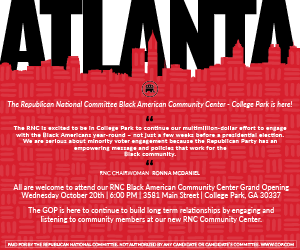on
On the verge of reapplying for accreditation, Morris Brown College reconciles its troubled history with ambitions for the future — but will its legacy be enough?
By Kamille D. Whittaker
Morris Brown College exists on hallowed ground. The portraits of distinguished alumni line the walls of the seemingly vacant administration building where the spirits of faculty and students once hustled and bustled. There is no winding, serpentine financial aid line as is characteristic of Historically Black Colleges and Universities at any given time of the year, or rush to register before classes close. There are only two degree programs now, with just a handful of students pursuing them and even fewer faculty members — seven to be exact — to instruct. Yet, there is undeniable history and tradition here — at least enough worth preserving. Even the business magazines that are sprawled across a low, oak-lined table in the president’s suite lobby tell a story — they are randomly addressed to the presidents who have, most recently, occupied the executive suite of Morris Brown’s administration building since the college’s fateful day: Dr. Charles Taylor, Dr. Leroy Frazier. The former administrators have since thrown in the towel — perhaps taxed to the limit by the seemingly insurmountable debt under their tutelage, or more than likely, jaded by the notion that a 126-year-old HBCU could possibly be vacillating precariously between distinction and extinction in a city virtually throbbing with African-American dignitaries and likely HBCU alums. Ironically, one magazine’s cover headline, in particular, stands out: “How To Build an Endowment.”
It is probable that a healthy endowment would have prevented most, if not all, of the fiscal hurdles that led to Morris Brown’s loss of accreditation by the Southern Association of Colleges and Schools in 2003. But the crux of Morris Brown’s problems ultimately lies within its lack of developmental strategies. The bottom line: The board of trustees and head administrators, preceding the college’s loss of accreditation, failed to dedicate enough priority to capital fundraising initiatives, and neglected to monitor the institution’s financial statements. Attention to those key governance responsibilities would have forecasted the school’s impending fall from grace.
Since then, and in an effort to gain favor with SACS, Morris Brown’s board of trustees has been restructured. A new chairman and seven heavyweights of the city’s corporate, financial, political and communications sectors have been added. Several of the members who were on the board in 2003 still remain as well.
If Morris Brown were another school — the remnants of the 2003-2004 board may have been ousted. Last year, at the financially strapped LeMoyne-Owens College in Memphis, an anonymous donor pledged $2.5 million to help the college meet its end-of-the-month operating expenses, with the stipulation that all 30 members of the HBCU’s board of trustees must resign. They did.
It follows that Morris Brown’s fiscal woes are not exclusive to the college and are, in fact, an indicator of a larger problem plaguing the nation’s 103 HBCUs, where a dire need for strong accountability, efficiency monitoring and capacity building is ever-present.
Nearly 15 percent of private HBCUs are struggling to survive or are under the threat of losing accreditation. For instance, Grambling State University, Bennett College and Talladega College are all currently on probation, and in most cases a lack of financial resources has been cited as the cause. Mary Holmes College, a historically black, two-year college for women in West Point, Miss., founded in 1892 by the Freedmen of the Presbyterian Church, lost its appeal for accreditation the same day as Morris Brown. Florida A&M University and Wilberforce University are also suffering from inadequate financial resources and accounting practices.
Although many are private schools, most HBCUs, including those which boast robust endowments like Spelman, Morehouse, Hampton, Xavier and Howard, are substantially subsidized by federal government funding. At Morris Brown, just under 90 percent of the student body depended on federal financial aid in order to matriculate.
A NEW BEGINNING
Collectively, Morris Brown’s administrators are not guarded about the skeletons in the institution’s closets. They have been fully forthcoming with the student body and community about its financial issues. There’s no spin. No marketing ploy. No cover up — just an acceptance of the past and a commitment to staying open and reapplying for accreditation with SACS this fall.
“When you look at the balance sheet, pending foreclosure and outstanding debt on paper, [Morris Brown] should close,” admitted Dr. Stanley Pritchett, the former superintendent and educational consultant for Fulton County Public School system who was recently named acting president of Morris Brown. According to Morris Brown’s State of the College report in February 2007, the college was $27 million dollars in debt; $5 million of which is short-term and immediate debt.
“As long as they make consistent payments to the long-term debt, they will be considered in fair financial standing,” offers SACS officials. But the $5 million needs to be taken care of immediately in spite of the $350,000 needed to operate monthly. To date, they have raised $2.5 million and hope to raise another $1 million for scholarship funds.
The commitment by the Pritchett administration and Board of Trustees has always been to stay open; and as if everyone has received the same set of talking points, the buzz phrases flitting between the campus’ seven faculty members are “new beginning,” “complete restoration” and “onward and upward.” “There is much to be optimistic about,” declares Todd Blackburn, director of Alumni Affairs. Despite the looming shadow that the loss of accreditation cast upon the college, the interest in Morris Brown as a low cost option for higher education has never wavered. In fact, as of last semester, the college received 1,200 applications for admission — a testament to Morris Brown’s undying legacy. Of the applicant pool, 800 were accepted.
“It is our goal to have 250-300 students actually matriculate,” projects Pritchett, noting that that figure would be a 150 percent increase in enrollment from the number of students currently attending.
“The students who have come to Morris Brown and who continue to come are connected to the institution and its legacy and choose to come here,” offers Dr. Alix Pierre, interim dean of academic affairs.
Apparently the same applies to the faculty that stuck around. “I was here teaching when we first caught wind of the loss the accreditation, and it was devastating,” recalls Pierre. Yet, in spite of being caught off guard, he remembers his initial resolve to get the college back on the right track.
And what of the students who call Morris Brown their alma mater? The most burning question is: How will the graduates fair when they attempt to enter the workforce or apply for graduate school?
“To my knowledge, not one student has been unable to attend a graduate school or land a job of their choice,” assures Pritchett. “We keep all of our students fully informed about the accreditation status of the college.”
With multiple accrediting bodies throughout the United States, many have queried why Morris Brown has not pursued accreditation with another agency. Former MBC president Dr. Charles Taylor tussled with the very idea when the school lost the appeal shortly after SACS revoked accreditation.
“Being accredited with the Transnational Association of Christian Colleges and Schools would make Morris Brown eligible to receive the federal funding the college relies on,” explains Taylor.
Unlike Taylor, Pritchett is not considering accreditation from another agency. “There are plenty of accrediting boards and agencies that we could pursue membership with. But when it comes to being a symbol of academic excellence and laying the foundation for future classes, it is imperative that we seek membership with the accrediting body that best exemplifies and demands such excellence, and that’s SACS.”
Accordingly, even with a new accrediting agency, under federal law the private, Morris Brown must wait two years to be eligible for federal financial aid. “And Morris Brown would still have to be in good financial standing,” adds Dr. Russell Fitzgerald executive director of Transnational Association of Christian Colleges and Schools.
What if attempts to regain accredited status fall through? Pritchett projects, “If we are denied accreditation and even if we are granted candidacy, there is still an 18-month to two-year waiting period before we can be eligible for federal financial aid again. Thus, we will continue our aggressive capital campaign that will be earmarked exclusively for the college’s scholarship packages. Out of the 800 we accept, we will be able to offer the students who decide to matriculate more attractive private financial aid packages that combine scholarships with work study programs and private loans to make up the $7,000 per year tuition.”
A BEACON OF HOPE
There is only one institution that has managed to escape the fate of revoked accreditation. Texas College, also an HBCU, lost its accreditation due to fiscal mismanagement in 1996, and then regained it five years later — the only school in SACS history to do so.
And Morris Brown seems to be in a promising position to regain its accreditation: “Out of the 11 core requirements that would allow us to regain accreditation, we have successfully met 10 of them,” reveals Pritchett. SACS requires that the institution participate in financial workshops; have its comprehensive insurance and liability protection in place; continue to remain open and enroll students in full-time academic programs; and successfully pass institutional audits. The last requirement: Morris Brown must prove fiscal stability, which means they must create and demonstrate a convincing and executable redevelopment plan to alleviate the debt and function in the black.
At best, it is a lesson in efficiency. If the school manages to regain accreditation status it will be one more example of how the institution managed to survive for more than five years without a penny from the government; was resilient in the face of adversity; and preserved its legacy for the sake of those who have and will pass through the halls of Morris Brown College.
Originally Published in Atlanta Tribune: The Magazine, September 2007
Join our email list to stay connected.






Pingback: Magic mushroom online
Pingback: วิเคราะห์บอลวันนี้
Pingback: cv letter template
Pingback: yehyeh
Pingback: ประตูสำเร็จรูป
Pingback: WEDDING